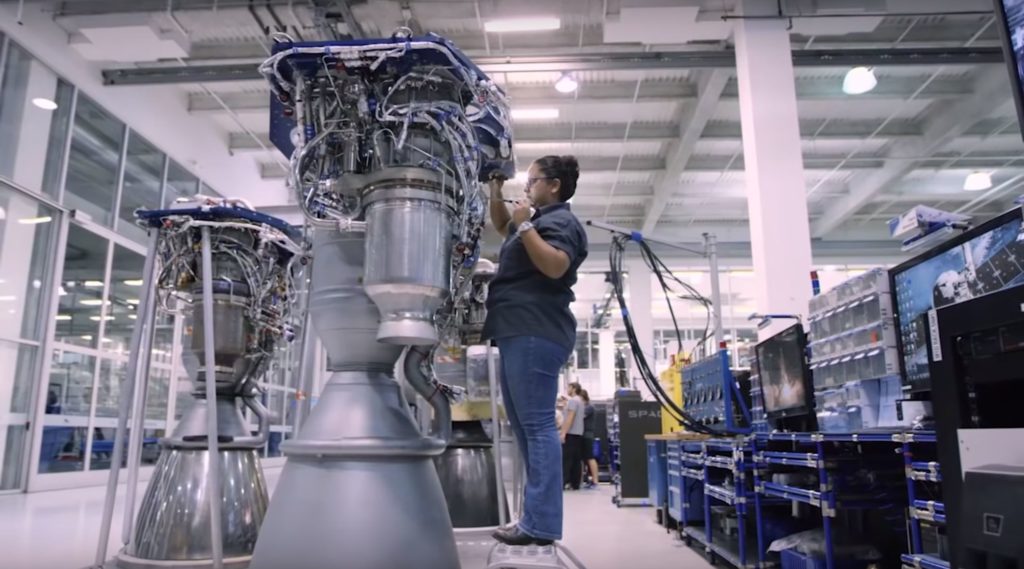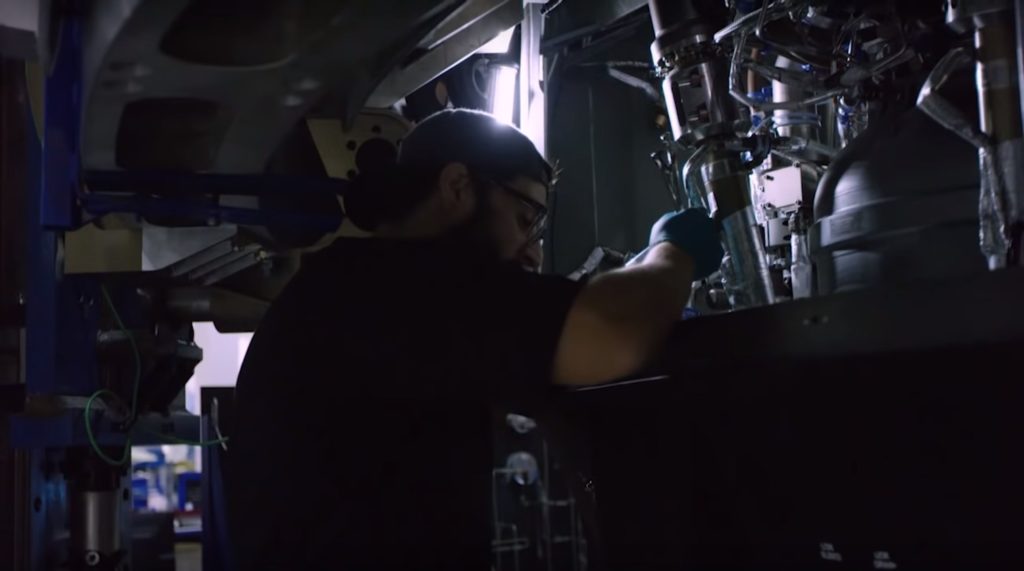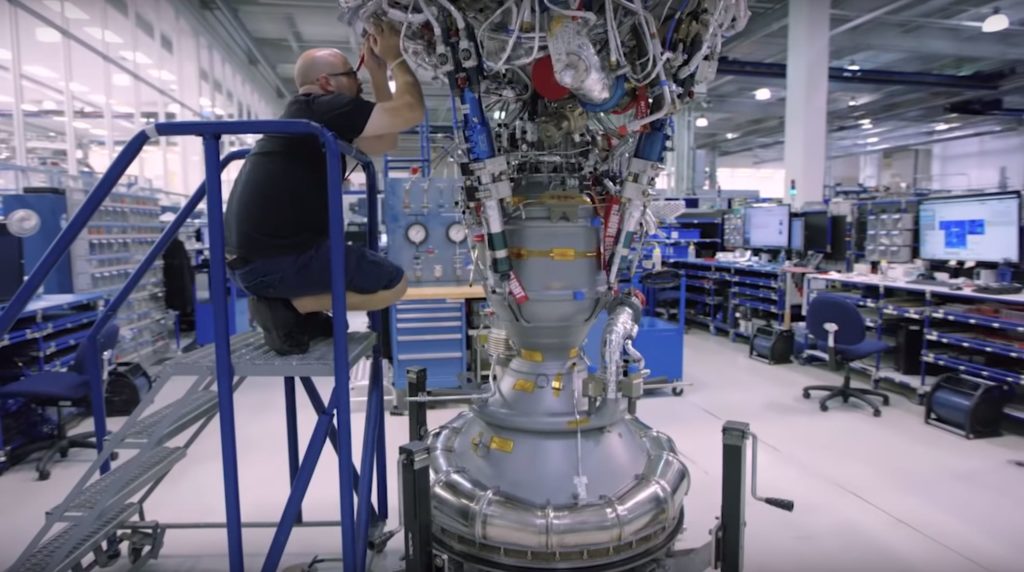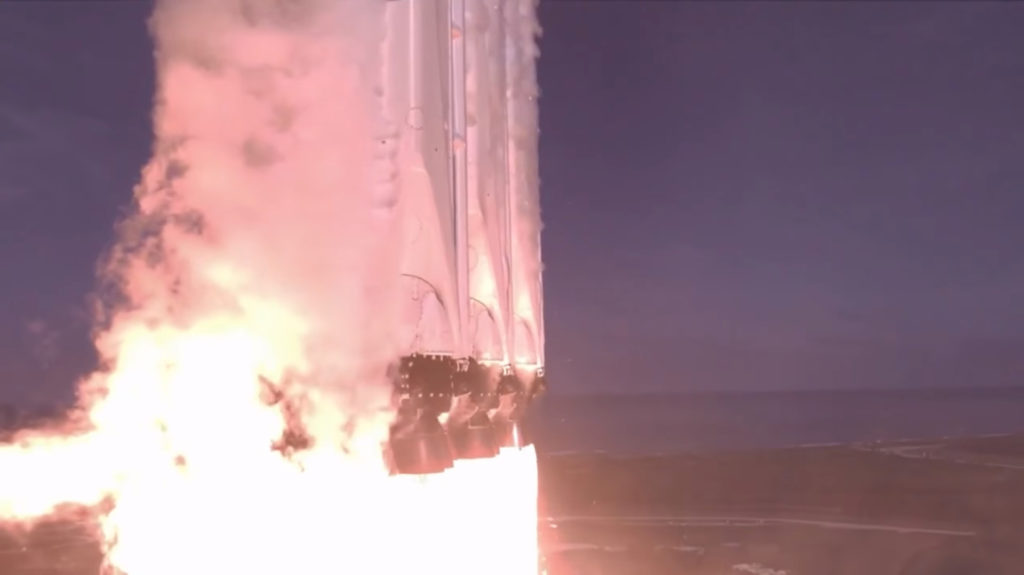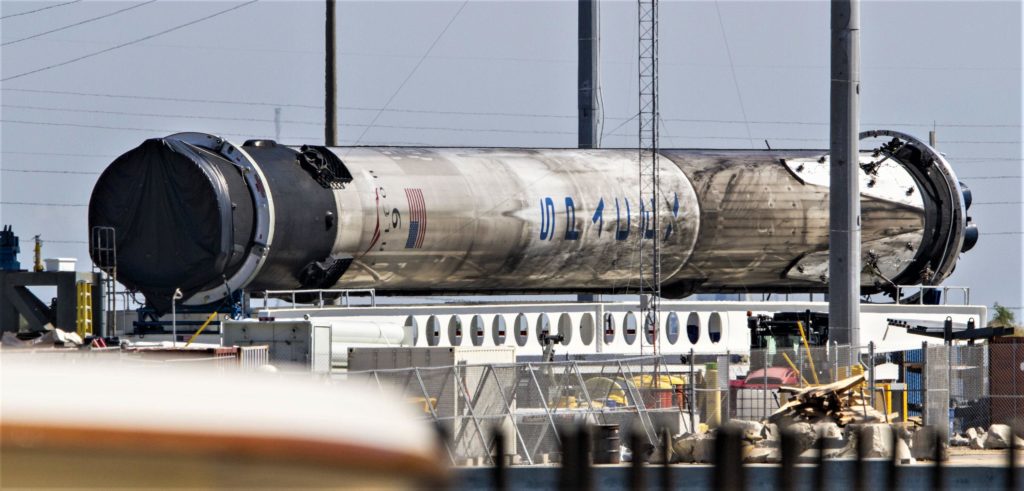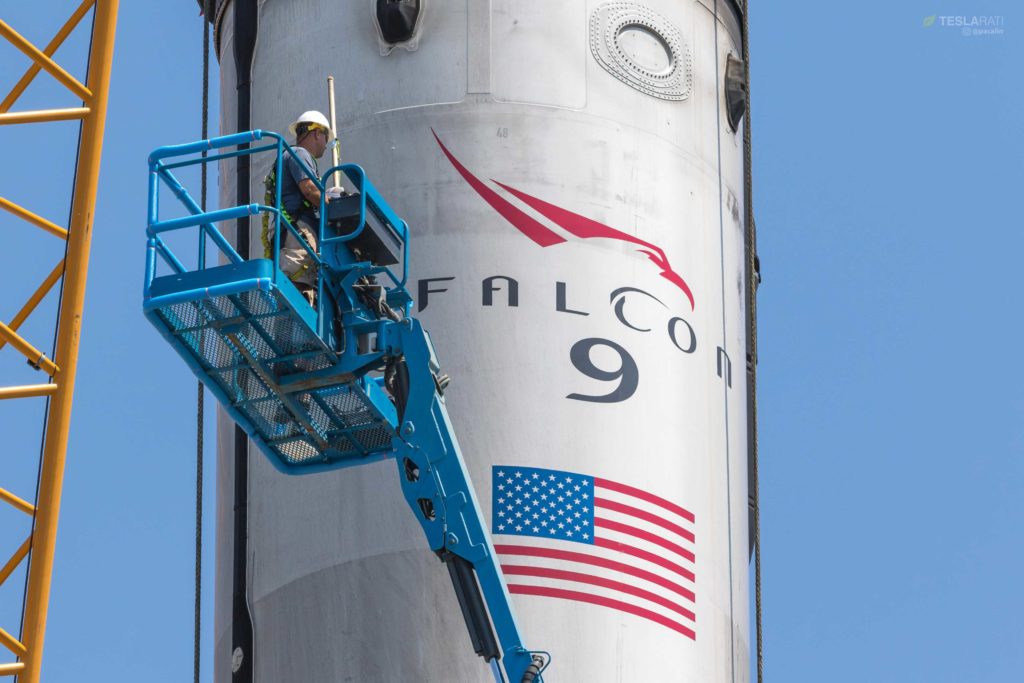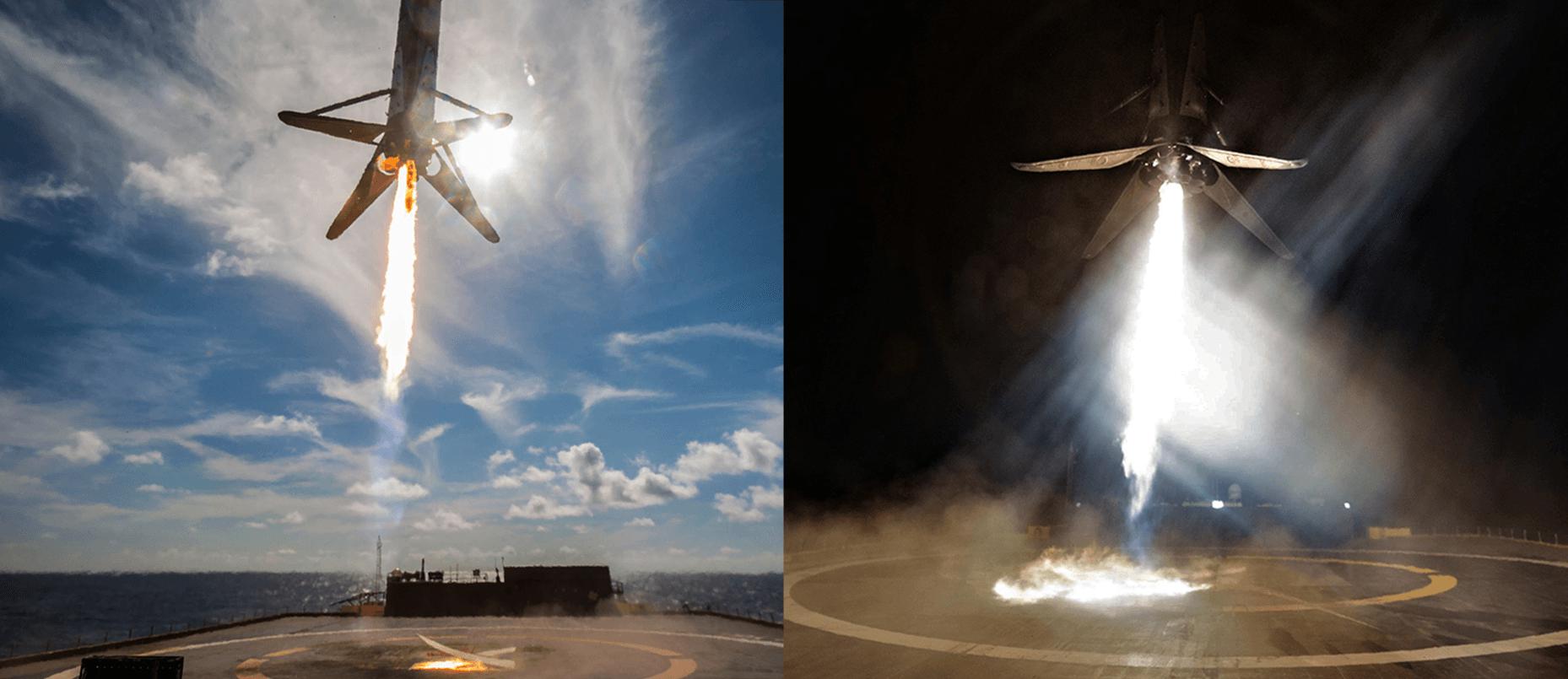

News
SpaceX’s Falcon 9 and Heavy manifest grows lopsided as launches align for Q4
For a variety of reasons both clear or otherwise, a significant number of SpaceX’s Falcon 9 and Falcon Heavy launches initially scheduled near the beginning or middle of the second half of 2018 are all slipping right into October, November, and December.
While communications satellite Telstar 18V’s two-week slip to NET September 8 and SAOCOM-1A’s own several-week tumble to October 7th appear to have their own respective and discernible reasons, namely some sort of range or payload issue (Telstar) and difficulties with the Falcon 9 rocket (SAOCOM), it’s much harder to know why multiple other payloads have slipped into late 2018.
Although the multiple slips and slides of several payloads and much of SpaceX’s H2 2018 launch manifest may be hard to parse alongside the year’s milestone first half, at least two reliable launch manifest sources (SpaceflightNow and one other) more or less independently corroborate the apparent realignment. Explanations, however, are far harder to find – to be expected in the business of space launch. Still, multiple launch delays can be traced to either payload or rocket issues.
- SpaceX technicians wrench on Merlin 1D and Merlin Vacuum engines. Raptor was apparently dramatically larger in person. (SpaceX)
- SpaceX technicians wrench on Merlin 1D and Merlin Vacuum engines. (SpaceX)
- SpaceX technicians wrench on Merlin 1D and Merlin Vacuum engines. (SpaceX)
Payload-side delays aplenty but rocket-slips, too
Iridium CEO Matt Desch, for example, noted that his company’s Iridium NEXT-8 launch of the constellation’s final 10 satellites is slipping from its original launch date target because of delays preparing the satellites for launch, rather than any issue with SpaceX rocket availability. While not official, the Falcon 9 launch of communications satellite Es’hail-2 has also rapidly jumped from the end of August or early September into Q4 2018 (likely NET October or November), hinting heavily at payload processing delays or technical issues with the complex satellite, as multi-month rocket-side delays would likely preclude interim September and October launches.
Still trying to nail the date down (satellite completion is gating, not rocket availability), but definitely won't be in September.
— Matt Desch (@IridiumBoss) August 13, 2018
Meanwhile, at least two of those prospective Q4 2018 SpaceX launches happen to be rideshare-dedicated, meaning that the payload consists of dozens of smaller satellites manifested and organized by a middleman company or agency. These two launches are Spaceflight’s SSO-A launch (~70 satellites) – currently NET November 2018 – and the US Air Force-led STP-2 mission, designed primarily to help SpaceX certify Falcon Heavy for Air Force launches while also placing roughly two dozen smaller satellites into orbit. STP-2 was delayed for multiple years as SpaceX gradually paced towards Falcon Heavy’s first real launch debut (February 2018), but launch delays (currently NET November 30 2018, probably 2019) will likely be caused by some combination of rocket, payload, and pad delays as SpaceX readies for what is essentially the second debut of much different Falcon Heavy.
While likely less a payload-side delay than a mountain-of-tedious-paperwork-and-bureaucracy delay, SpaceX’s NET November 2018 inaugural (uncrewed) demonstration launch of Crew Dragon, NASA scheduling documents published alongside an August 27 Advisory Council presentation suggest that the spacecraft will be ready for launch as early as September, whereas independent sources and visual observations have confirmed that the new Falcon 9 Block 5 booster (B1051) is either near the end or fully done with its McGregor, Texas acceptance testing. One certainly cannot blame SpaceX or NASA for caution at this stage, but the consequently uncertain launch debut of Crew Dragon almost certainly precludes any Falcon Heavy launches from Pad 39A in the interim, including STP-2’s theoretical NET November 30 launch date, which is literally inside Crew Dragon’s “November 2018” launch target.
- Falcon Heavy explodes off of Pad 39A, February 2018. (SpaceX)
- Falcon Heavy’s side boosters seconds away from near-simultaneous landings at Landing Zones 1 and 2. (SpaceX)
- SpaceX technicians wrench on Merlin 1D and Merlin Vacuum engines. Raptor was apparently dramatically larger in person. (SpaceX)
- It’s currently unclear whether B1046 or B1048 will become the first SpaceX rocket to fly three times. (Tom Cross)
- Falcon 9 B1048 stands proud after its West Coast launch debut, August 2nd. (Pauline Acalin)
On the other hand, several recent delays of SpaceX’s imminent (-ish) launch of Argentinian Earth observation satellite SAOCOM-1A have been suggested by several employees of the country’s CONAE space agency to be rocket-related, as they understand that the satellite itself is effectively ready to head to orbit at any time. It has yet to be officially confirmed, but it’s understood that Falcon 9 B1048 – previously flown on the launch of Iridium-7 – is being refurbished for SAOCOM-1A, potentially contributing to launch delays as SpaceX cautiously works through the inaugural reuses of some of its very first serial Falcon 9 Block 5 boosters.
Time will soon tell, as launching the roughly 8 to 10 launches tentatively remaining on SpaceX’s 2018 manifest will require extensive reuse of Block 5 boosters if multiple slips into 2019 are to be prevented. Regardless, best of luck to SpaceX’s technicians and engineers as they beat back rocket demons, grapple with uncooperative satellite payloads, and navigate the winding paths of Department of Defense and NASA rocket launch certifications.
For prompt updates, on-the-ground perspectives, and unique glimpses of SpaceX’s rocket recovery fleet check out our brand new LaunchPad and LandingZone newsletters!
Elon Musk
Tesla reveals it is using AI to make factories more sustainable: here’s how
Tesla is using AI in its Gigafactory Nevada factory to improve HVAC efficiency.

Tesla has revealed in its Extended Impact Report for 2024 that it is using Artificial Intelligence (AI) to enable its factories to be more sustainable. One example it used was its achievement of managing “the majority of the HVAC infrastructure at Gigafactory Nevada is now AI-controlled” last year.
In a commitment to becoming more efficient and making its production as eco-friendly as possible, Tesla has been working for years to find solutions to reduce energy consumption in its factories.
For example, in 2023, Tesla implemented optimization controls in the plastics and paint shops located at Gigafactory Texas, which increased the efficiency of natural gas consumption. Tesla plans to phase out natural gas use across its factories eventually, but for now, it prioritizes work to reduce emissions from that energy source specifically.
It also uses Hygrometric Control Logic for Air Handling Units at Giafactory Berlin, resulting in 17,000 MWh in energy savings each year. At Gigafactory Nevada, Tesla saves 9.5 GWh of energy through the use of N-Methylpyrrolidone refineries when extracting critical raw material.
Perhaps the most interesting way Tesla is conserving energy is through the use of AI at Gigafactory Nevada, as it describes its use of AI to reduce energy demand:
“In 2023, AI Control for HVAC was expanded from Nevada and Texas to now include our Berlin-Brandenburg and Fremont factories. AI Control policy enables HVAC systems within each factory to work together to process sensor data, model factory dynamics, and apply control actions that safely minimize the energy required to support production. In 2024, this system achieved two milestones: the majority of HVAC infrastructure at Gigafactory Nevada is now AI-controlled, reducing fan and thermal energy demand; and the AI algorithm was extended to manage entire chiller plants, creating a closed-loop control system that optimizes both chilled water consumption and the energy required for its generation, all while maintaining factory conditions.”
Tesla utilizes AI Control “primarily on systems that heat or cool critical factory production spaces and equipment.” AI Control communicates with the preexisting standard control logic of each system, and any issues can be resolved by quickly reverting back to standard control. There were none in 2024.
Tesla says that it is utilizing AI to drive impact at its factories, and it has proven to be a valuable tool in reducing energy consumption at one of its facilities.
Elon Musk
Tesla analysts believe Musk and Trump feud will pass
Tesla CEO Elon Musk and U.S. President Donald Trump’s feud shall pass, several bulls say.

Tesla analysts are breaking down the current feud between CEO Elon Musk and U.S. President Donald Trump, as the two continue to disagree on the “Big Beautiful Bill” and its impact on the country’s national debt.
Musk, who headed the Department of Government Efficiency (DOGE) under the Trump Administration, left his post in May. Soon thereafter, he and President Trump entered a very public and verbal disagreement, where things turned sour. They reconciled to an extent, and things seemed to be in the past.
However, the second disagreement between the two started on Monday, as Musk continued to push back on the “Big Beautiful Bill” that the Trump administration is attempting to sign into law. It would, by Musk’s estimation, increase spending and reverse the work DOGE did to trim the deficit.
Every member of Congress who campaigned on reducing government spending and then immediately voted for the biggest debt increase in history should hang their head in shame!
And they will lose their primary next year if it is the last thing I do on this Earth.
— Elon Musk (@elonmusk) June 30, 2025
President Trump has hinted that DOGE could be “the monster” that “eats Elon,” threatening to end the subsidies that SpaceX and Tesla receive. Musk has not been opposed to ending government subsidies for companies, including his own, as long as they are all abolished.
How Tesla could benefit from the ‘Big Beautiful Bill’ that axes EV subsidies
Despite this contentious back-and-forth between the two, analysts are sharing their opinions now, and a few of the more bullish Tesla observers are convinced that this feud will pass, Trump and Musk will resolve their differences as they have before, and things will return to normal.
ARK Invest’s Cathie Wood said this morning that the feud between Musk and Trump is another example of “this too shall pass:”
BREAKING: CATHIE WOOD SAYS — ELON AND TRUMP FEUD “WILL PASS” 👀 $TSLA
She remains bullish ! pic.twitter.com/w5rW2gfCkx
— TheSonOfWalkley (@TheSonOfWalkley) July 1, 2025
Additionally, Wedbush’s Dan Ives, in a note to investors this morning, said that the situation “will settle:”
“We believe this situation will settle and at the end of the day Musk needs Trump and Trump needs Musk given the AI Arms Race going on between the US and China. The jabs between Musk and Trump will continue as the Budget rolls through Congress but Tesla investors want Musk to focus on driving Tesla and stop this political angle…which has turned into a life of its own in a roller coaster ride since the November elections.”
Tesla shares are down about 5 percent at 3:10 p.m. on the East Coast.
Elon Musk
Tesla scrambles after Musk sidekick exit, CEO takes over sales
Tesla CEO Elon Musk is reportedly overseeing sales in North America and Europe, Bloomberg reports.

Tesla scrambled its executives around following the exit of CEO Elon Musk’s sidekick last week, Omead Afshar. Afshar was relieved of his duties as Head of Sales for both North America and Europe.
Bloomberg is reporting that Musk is now overseeing both regions for sales, according to sources familiar with the matter. Afshar left the company last week, likely due to slow sales in both markets, ending a seven-year term with the electric automaker.
Tesla’s Omead Afshar, known as Elon Musk’s right-hand man, leaves company: reports
Afshar was promoted to the role late last year as Musk was becoming more involved in the road to the White House with President Donald Trump.
Afshar, whose LinkedIn account stated he was working within the “Office of the CEO,” was known as Musk’s right-hand man for years.
Additionally, Tom Zhu, currently the Senior Vice President of Automotive at Tesla, will oversee sales in Asia, according to the report.
It is a scramble by Tesla to get the company’s proven executives over the pain points the automaker has found halfway through the year. Sales are looking to be close to the 1.8 million vehicles the company delivered in both of the past two years.
Tesla is pivoting to pay more attention to the struggling automotive sales that it has felt over the past six months. Although it is still performing well and is the best-selling EV maker by a long way, it is struggling to find growth despite redesigning its vehicles and launching new tech and improvements within them.
The company is also looking to focus more on its deployment of autonomous tech, especially as it recently launched its Robotaxi platform in Austin just over a week ago.
However, while this is the long-term catalyst for Tesla, sales still need some work, and it appears the company’s strategy is to put its biggest guns on its biggest problems.
-

 Elon Musk1 day ago
Elon Musk1 day agoTesla investors will be shocked by Jim Cramer’s latest assessment
-

 News6 days ago
News6 days agoTesla Robotaxi’s biggest challenge seems to be this one thing
-

 News2 weeks ago
News2 weeks agoTesla’s Grok integration will be more realistic with this cool feature
-

 Elon Musk2 weeks ago
Elon Musk2 weeks agoElon Musk slams Bloomberg’s shocking xAI cash burn claims
-

 News2 weeks ago
News2 weeks agoTesla China roars back with highest vehicle registrations this Q2 so far
-

 News2 weeks ago
News2 weeks agoTexas lawmakers urge Tesla to delay Austin robotaxi launch to September
-

 News2 weeks ago
News2 weeks agoTesla dominates Cars.com’s Made in America Index with clean sweep
-

 Elon Musk1 week ago
Elon Musk1 week agoFirst Look at Tesla’s Robotaxi App: features, design, and more

